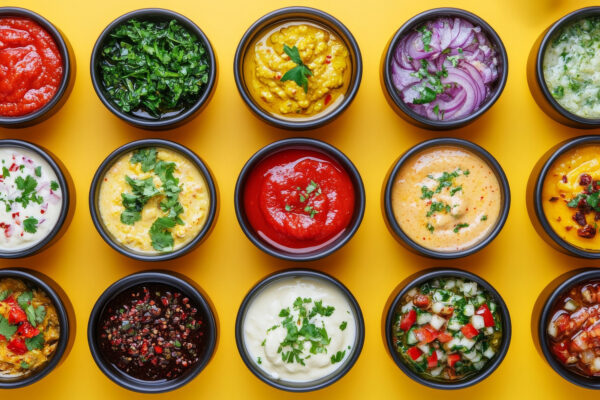The restaurant value meal landscape is experiencing a fascinating contradiction in 2025. Quick service restaurants are simultaneously increasing their combo meal offerings and raising prices on these restaurant combo meals – a strategy that might seem counterintuitive but reveals deeper market dynamics at play.
This week’s announcement that McDonald’s is bringing back “Extra Value Meals” starting September 8th – including a $5 sausage and egg McMuffin meal and an $8 Big Mac meal – perfectly illustrates this trend in action. The move comes as McDonald’s CEO Chris Kempczinski reported that traffic among low-income customers was down “nearly double digits,” highlighting the pressure QSR chains face to balance margin requirements with customer retention.
But what’s really happening beneath these headline-grabbing value announcements? Datassential’s newly released “State of Value” report provides crucial context that every foodservice professional needs to understand.
Value Meal Volume vs. Value Meal Pricing:
The QSR Dilemma
According to new industry data, QSR brands are leaning harder into restaurant value meals than they have in recent years. Fast casual chains have ramped up combo meal introductions by 79% year-to-date compared to 2024, while QSR combo meal pricing has increased by 14% – even as these chains offer more value-focused promotions.
This creates an interesting paradox for foodservice professionals to consider: customers are being presented with more restaurant combo meal options than ever, but at higher price points than in previous years.
The $5 Threshold:
Where Value Perception Breaks Down
The data reveals a critical insight for menu strategists: there’s a clear value perception cliff at the $5 mark for QSR restaurant value meals. Items priced above this threshold show significantly lower value ratings, regardless of what’s included in the bundle.
For context, combo meal pricing hit its lowest point in 2020, and while 2025 year-to-date pricing remains similar to recent years, the upward trajectory is unmistakable. The average QSR restaurant combo meal now sits at $8.40 – well above that crucial $5 sweet spot where consumers perceive maximum value.
Segment-by-Segment:
Where Value Strategies Diverge
While QSR chains are raising restaurant value meal prices, other segments tell different stories:
Fast Casual: Despite the 79% increase in combo offerings, average pricing has actually decreased by 2% year-over-year. These chains are using restaurant combo meals as traffic drivers rather than margin builders.
Casual Dining: Showing the most dramatic shift with a 14% decrease in combo meal pricing year-over-year. These brands are aggressively pursuing value-conscious customers who might otherwise choose QSR options.
Midscale: Maintaining relatively stable pricing with just a 1% increase, positioning themselves as the middle ground between QSR convenience and casual dining experience.
The Choice Factor:
What Makes Restaurant Value Meals Work
The most successful restaurant combo meals in 2025 share one key characteristic: they offer choice alongside value. Top-performing combo deals allow customers to customize their experience while maintaining attractive price points.
This insight is crucial for foodservice professionals developing new restaurant value meal strategies. Simply bundling items together isn’t enough – consumers want agency in their value equation.
Convenience Stores:
The Value Benchmark
Convenience stores show the strongest correlation between price and perceived value (-0.64 compared to restaurants’ -0.27). This highlights that c-store customers are more price-sensitive and less influenced by other factors like brand experience or customization options.
For restaurant operators, this data point reinforces that foodservice value perceptions operate differently than retail – there’s more room to build value through experience, not just price.
Strategic Implications for Foodservice Professionals
Datassential’s “State of Value” research suggests several key strategies:
- Price Sensitivity Varies by Segment: QSR operators have more flexibility to raise restaurant combo meal prices if they’re adding genuine value through choice and customization.
- The $5 Rule Still Applies: For maximum value perception at QSR level, keeping restaurant value meals at or below $5 remains critical.
- Choice Drives Satisfaction: The highest-rated combo deals offer customization options, suggesting that perceived control enhances value perception.
- Segment-Specific Strategies: What works for QSR pricing won’t necessarily work for fast casual or casual dining, where different value equations apply.
To see which chains are executing these value strategies most successfully, check out the 2025 Datassential Awards for restaurant chains that bring superior value to consumers. These winners demonstrate how effective value positioning translates into customer recognition and loyalty.
Looking Ahead:
Value Meal Evolution
As restaurant combo meal introductions continue climbing and consumer expectations evolve, foodservice professionals need to balance the tension between margin requirements and value perception. Datassential’s research suggests that while there’s room to increase restaurant value meal pricing in some segments, success depends heavily on execution and customer choice.
The brands winning in this space aren’t just offering cheaper options – they’re creating value experiences that justify their price points while still delivering on the fundamental promise of restaurant combo meals: more for less.
For foodservice operators navigating this landscape, the key insight is clear: value isn’t just about price anymore, but price still matters more for restaurant value meals than for any other menu category. The most successful strategies will balance both elements while giving customers the choice they increasingly expect from their dining experiences.
Want deeper insights from the “State of Value” report, or access to other food and beverage intelligence critical to your business? Find more information or request a demo here to stay ahead of the trends shaping the industry.
 EN | English UK
EN | English UK DE | Deutsch
DE | Deutsch FR | Français
FR | Français IT | Italiano
IT | Italiano SP | Español
SP | Español





